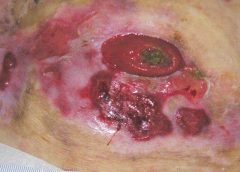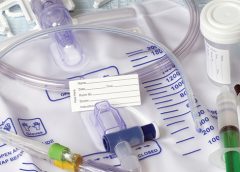Top 10 outpatient reimbursement questions
At the 2015 Wild on Wounds conference, the interactive workshop “Are You Ready for an Outpatient Reimbursement Challenge?” featured a lively discussion among participants about 25 real-life reimbursement scenarios. Here are the top 10 questions the attendees asked, with the answers I provided.
Q Why is it necessary for qualified healthcare professionals (QHPs) such as physicians, podiatrists, nurse practitioners, physician assistants, and clinical nurse specialists to identify the place of service where they provide wound care services and to correctly state the place of service on their claim forms?

Buzz Report: Latest trends, Part 1
We all lead busy lives, with demanding work schedules and home responsibilities that can thwart our best intentions. Although we know it’s our responsibility to stay abreast of changes in our field, we may feel overwhelmed when we try to make that happen. Keeping clinicians up-to-date on clinical knowledge is one of the main goals of the Wild On Wounds…

Case study: Peristomal pyoderma gangrenosum
As a wound care specialist, you have learned about many skin conditions, some so unusual and rare that you probably thought you would never observe them. I’ve been a nurse for 38 years, with the last 10 years in wound care, and that’s certainly what I thought. But I was wrong. Let me tell you about my challenging patient with…

Clincal Notes: Analysis, Osteomyelitis, sickle cell, maggot
Value of systematic reviews and meta-analyses in wound care “Systematic reviews and meta-analyses—literature-based recommendations for evaluating strengths, weaknesses, and clinical value,” in Ostomy Wound Management, discusses evidence-based practice and how systematic reviews (SRs) and meta-analyses (MAs) can help improve management of wound care patients. The authors of the article explain evidence-based practice and provide useful definitions for key terms. They…

Clinician Resources: Ulcer Prevention, CAUTI, Negative Bacteria
Start the New Year off right by checking out these resources. Pressure ulcer prevention education Access the following education resources from Wounds International: The webinar “Real-world solutions for pressure ulcer prevention: Optimising the role of support surfaces” includes: • an overview of the issue of pressure ulcers • what to consider when choosing a support surface • how to operationalize…

Don’t go it alone
A fundamental rule of wound care is to treat the “whole” patient, not just the “hole” in the patient. To do this, we need to focus on a holistic approach to healing, which means evaluating everything that’s going on with the patient—from nutrition, underlying diseases, and medications to activity level, social interactions, and even sleep patterns. We know that as…

Empowering patients to play an active role in pressure ulcer prevention
Developing a pressure ulcer can cause the patient pain, lead to social isolation, result in reduced mobility, and can even be fatal. According to the Agency for Healthcare Research and Quality, estimated costs for each pressure ulcer range from $37,800 to $70,000, and the total annual cost of pressure ulcers in the United States is an estimated $11 billion. Nurses…

Medications and wound healing
Each issue, Apple Bites brings you a tool you can apply in your daily practice. Here are examples of medications that can affect wound healing. Assessment and care planning for wound healing should include a thorough review of the individual’s current medications to identify those that may affect healing outcomes. Clinicians must then weigh the risks and benefits of continuing…

Pros and cons of hydrocolloid dressings for diabetic foot ulcers
Diabetic foot ulcers stem from multiple factors, including peripheral neuropathy, high plantar pressures, decreased vascularity, and impaired wound healing. Contributing significantly to morbidity, they may cause limb loss and death. (See Foot ulcers and diabetes.) Initially, hydrocolloid dressings were developed to function as part of the stomal flange. Based on their success in protecting peristomal skin, they were introduced gradually…

Restorative nursing programs help prevent pressure ulcers
Immobility affects all our body systems, including our skin. According to the National Pressure Ulcer Advisory Panel, many contributing factors are associated with the formation of a pressure ulcer, with impaired mobility leading the list. So what can clinicians do to prevent harm caused by immobility? One often-overlooked strategy is a restorative nursing program. (See About restorative nursing.) Moving up…

The power of the positive
Being positive in a negative situation is not naïve. It’s leadership. — Ralph S. Marston, Jr., author and publisher of The Daily Motivator website Clinicians may encounter many challenges and stressors in the workplace—long hours, rotating shifts, inadequate staffing, poor teamwork, and pressure to achieve higher performance levels in an emotionally and physically demanding field. But hope exists. Positive psychology…

Top 10 outpatient reimbursement questions
At the 2015 Wild on Wounds conference, the interactive workshop “Are You Ready for an Outpatient Reimbursement Challenge?” featured a lively discussion among participants about 25 real-life reimbursement scenarios. Here are the top 10 questions the attendees asked, with the answers I provided. Q Why is it necessary for qualified healthcare professionals (QHPs) such as physicians, podiatrists, nurse practitioners,…
Click here to access the digital edition
